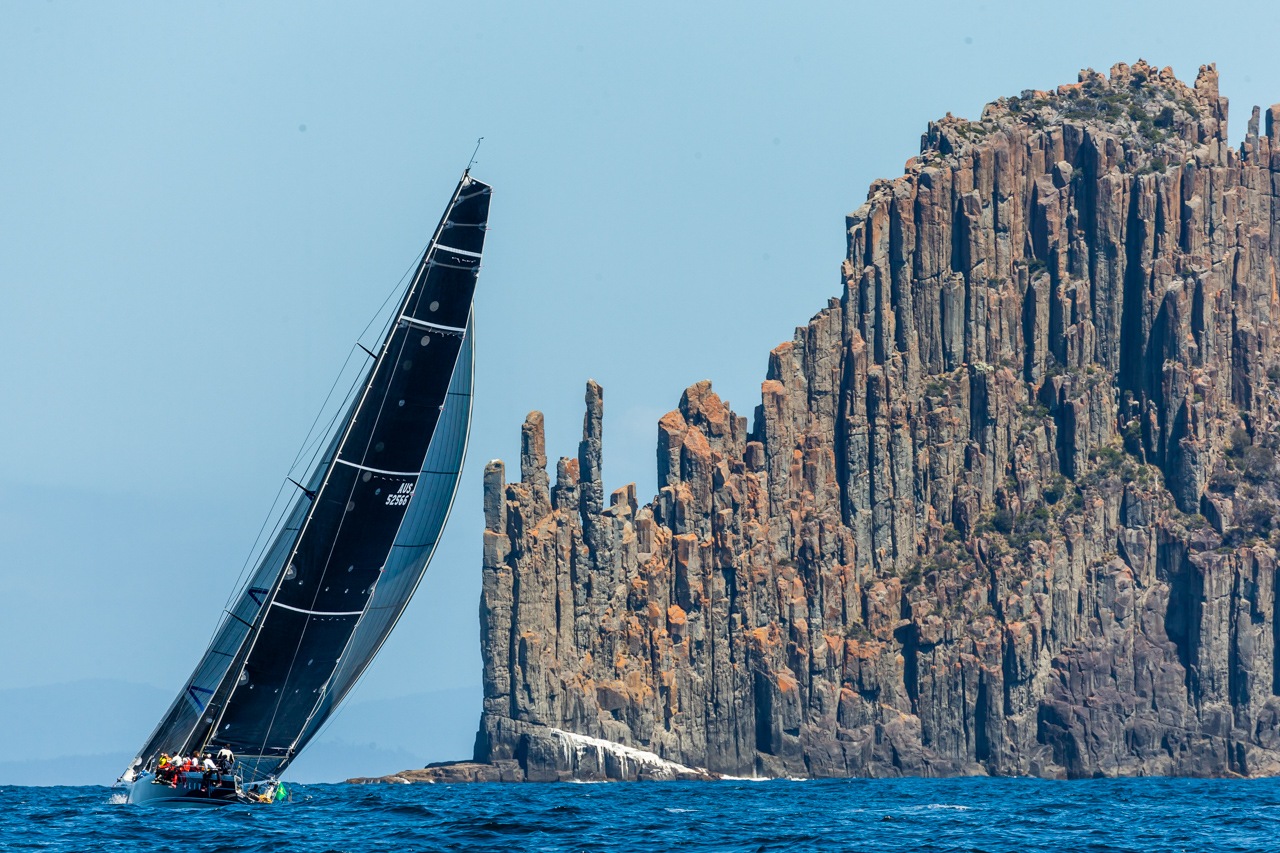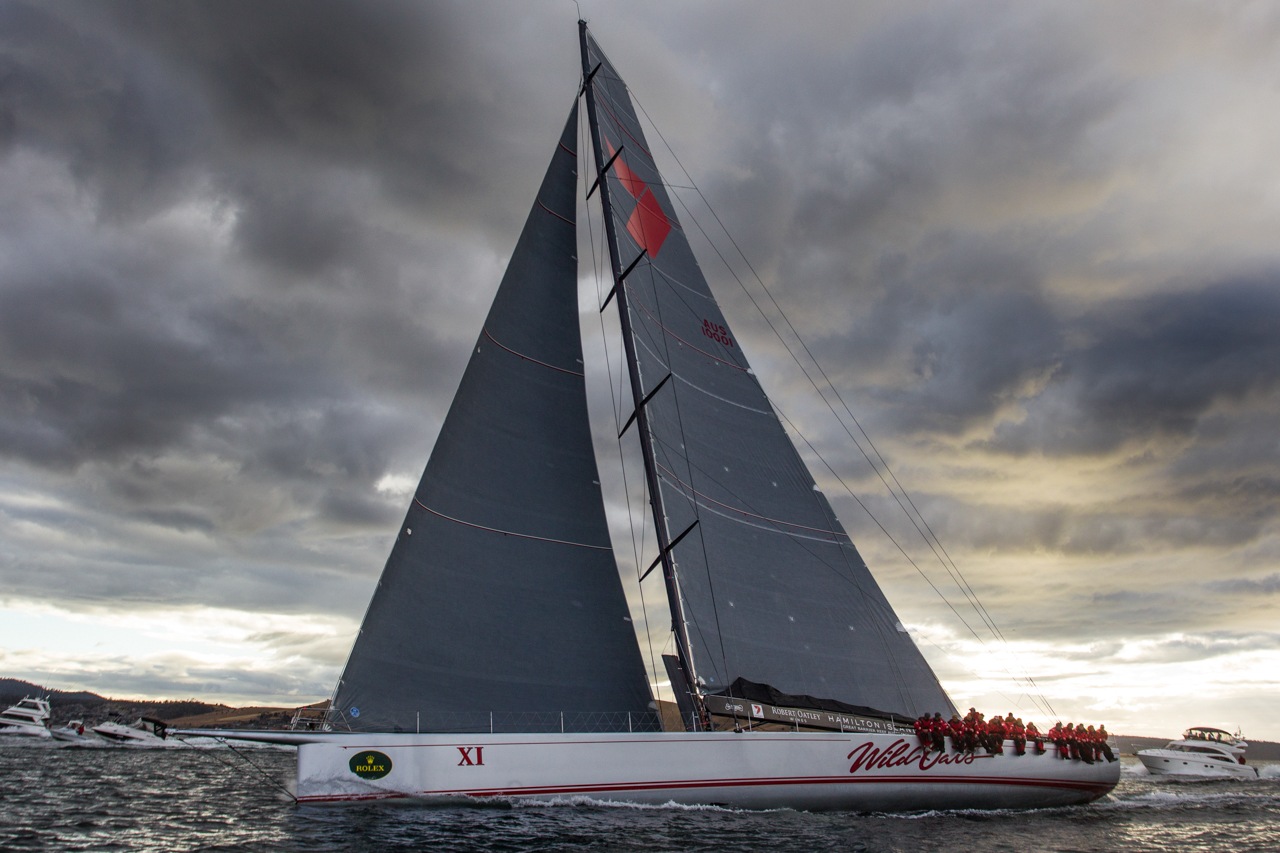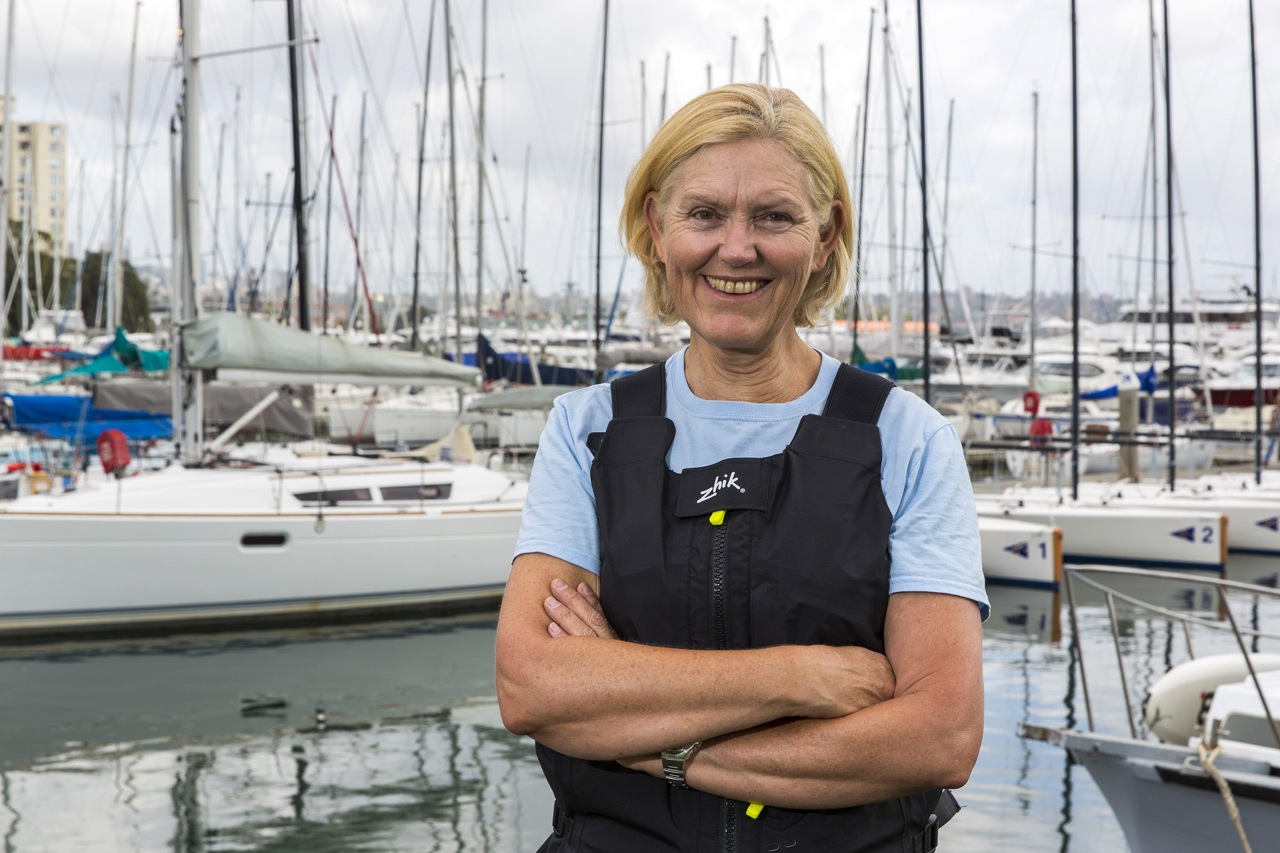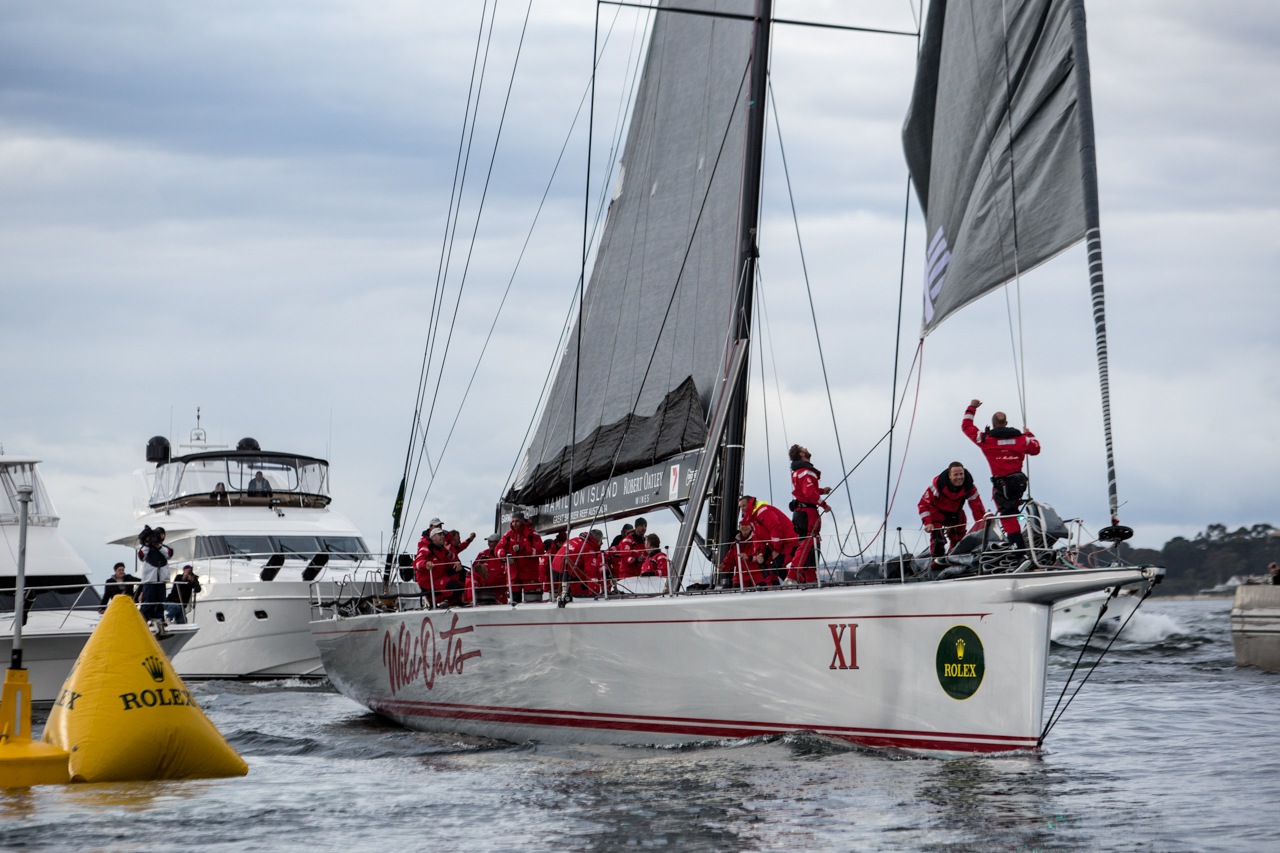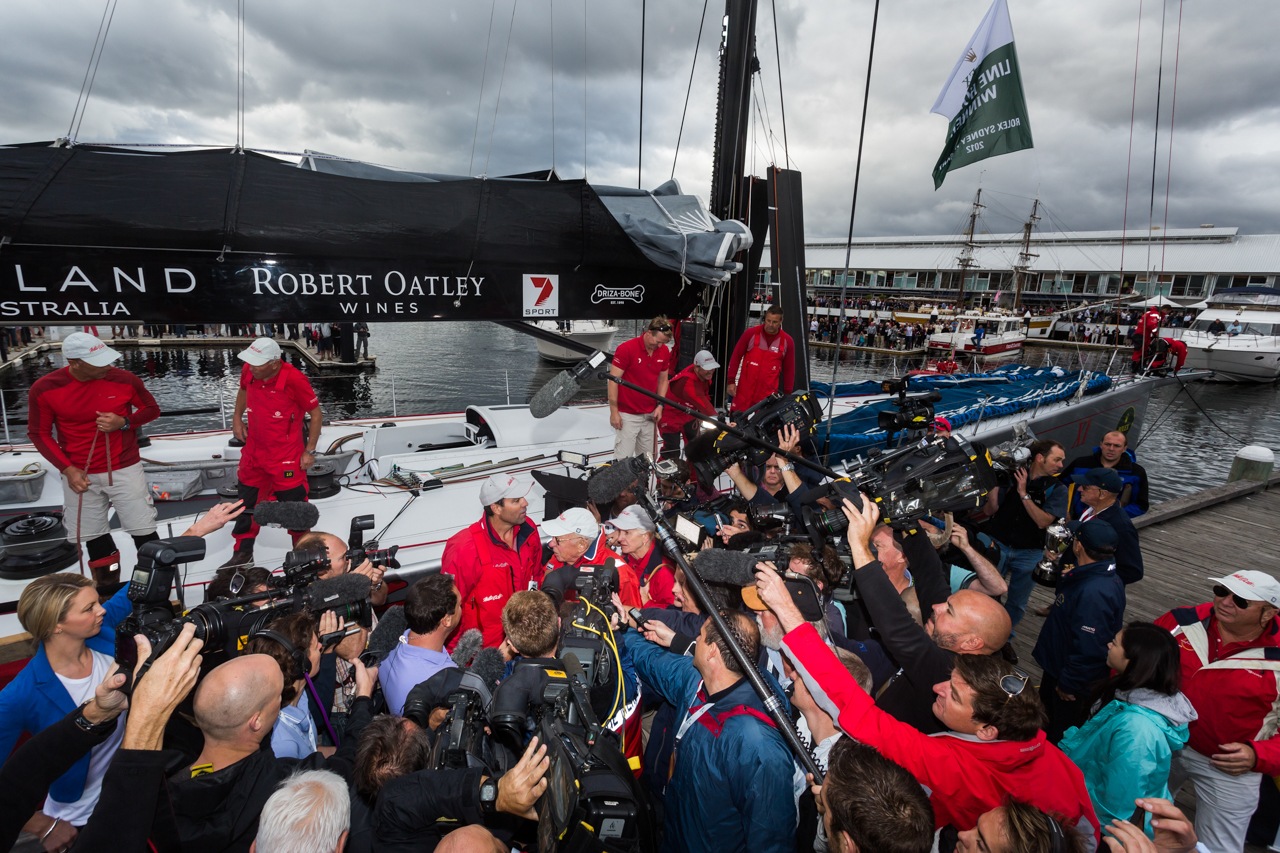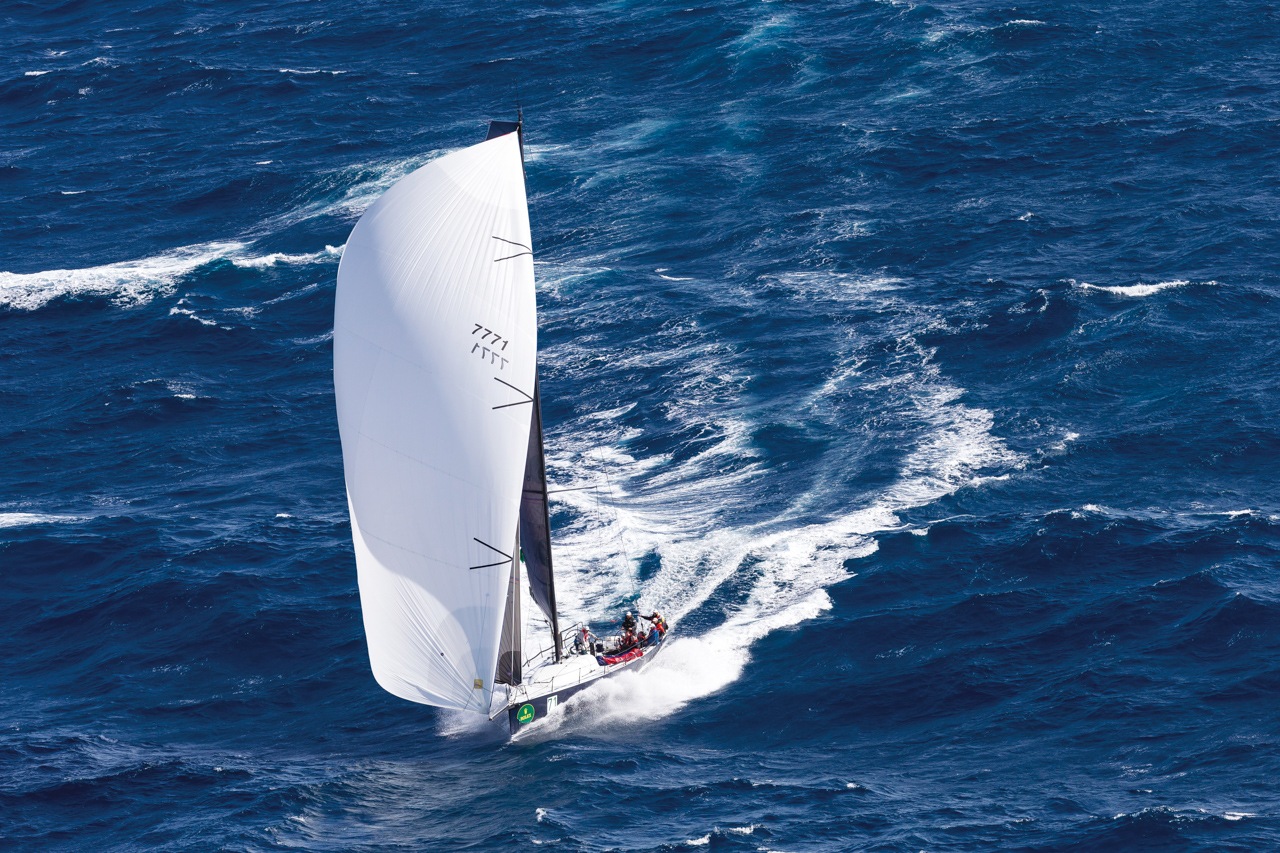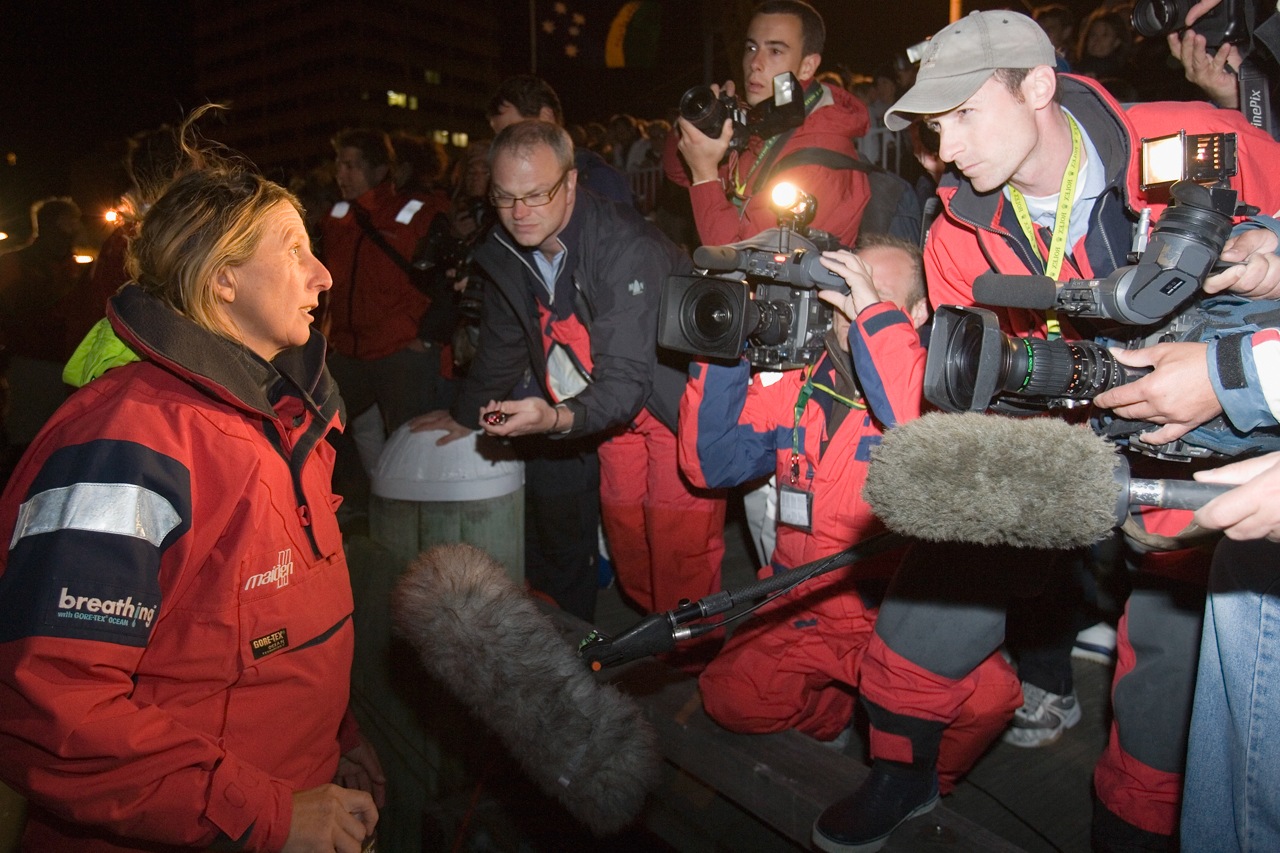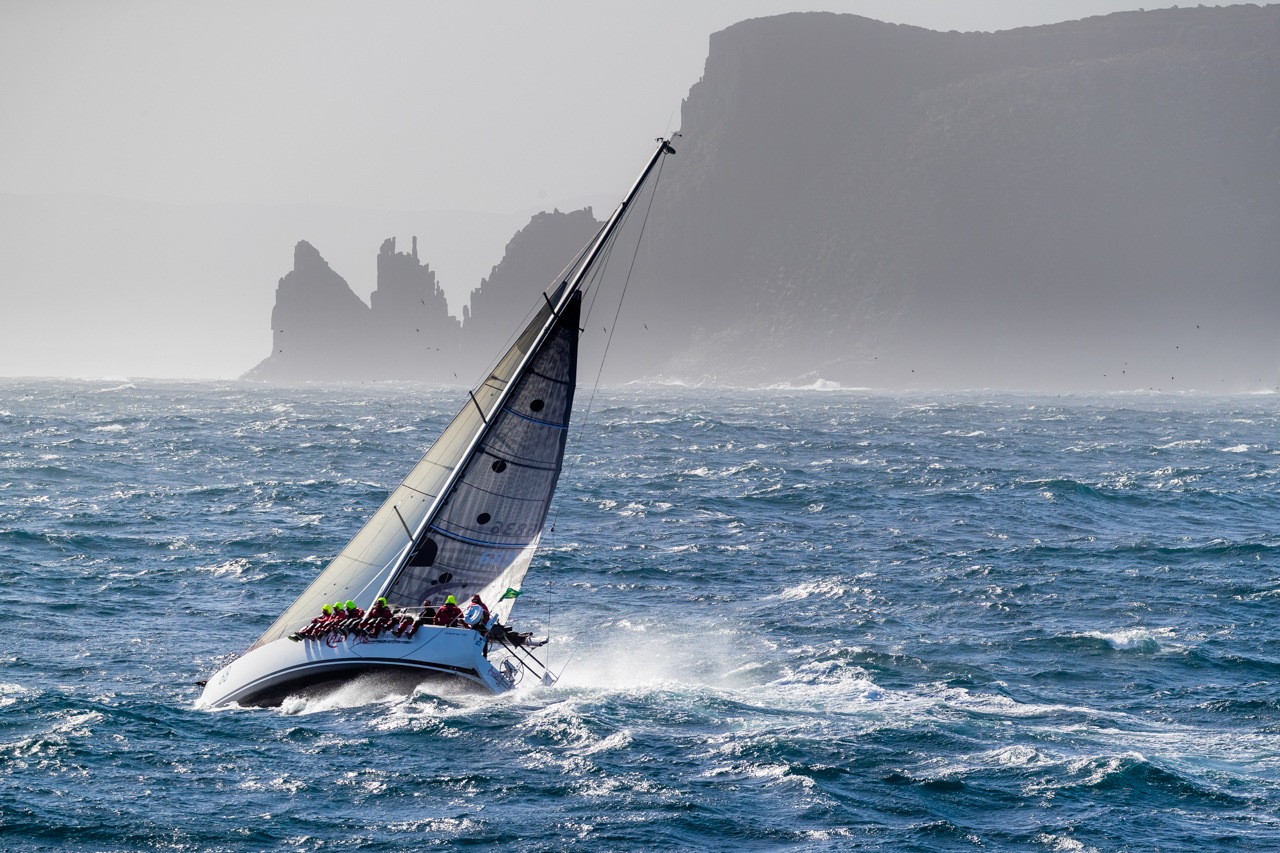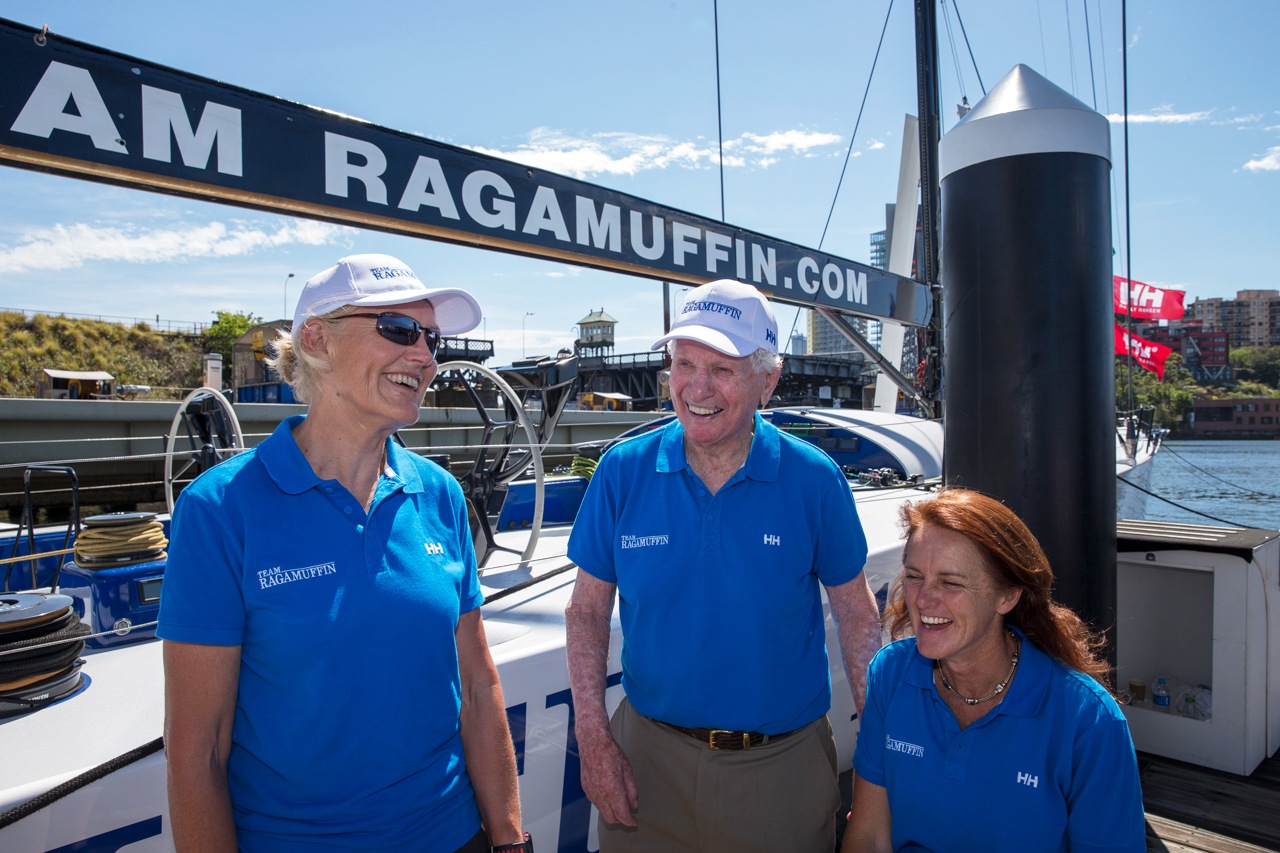Rite of passage
From humble beginnings, the Rolex Sydney Hobart Yacht Race has evolved over the last 75 years into a truly iconic sporting event. The start, on the world’s finest natural harbour, is beamed live around the globe: something no other annual offshore race can boast. Indeed, the undefineable appeal of ocean racing that brings out the best in human nature – resilience, teamwork, courage and dedication – continues: “It just gets into your blood,” says veteran of twenty-three Hobart race starts, Vanessa Dudley.
Photography by Carlo Borlenghi / Andrea Francolini
19 December 2019
Advertisement
It’s that time of year when offshore yacht racing steps into the limelight. For the next few weeks, the Rolex Sydney Hobart Yacht Race will grab the attention of the Australian public in a way that no other sailing event ever does. The media focus will be on the supermaxis, the size of the fleet, the long-range weather forecasts and the chance of high drama.
But beyond the attention paid to the line honours contenders, there are the overall handicap contenders and the human interest stories. Tales abound of sailors coming back for the 30th, 40th or even 50th time: fathers and sons competing with or against each other; women taking on key roles on various boats; international and interstate entrants going to great lengths to get to the start line; and first-timers full of anticipation and nervous excitement.
At 75, the Rolex Sydney Hobart only continues to strengthen its position as a major Australian and international sporting event.
For Matt Allen, who is preparing to sail his 30th Hobart race this year on his TP52 Ichi Ban, “the big thing is the challenge: it’s a totally unique race,” he says.
“It’s such a challenging race track, there are always things happening that create a different race every year. And it’s a really hard race to win. You need to be bloody good – and incredibly lucky.”
Advertisement
“The configuration of the boat, what sails you’re going to take… There is an enormous amount in it, and an enormous amount of intrigue.
“How hard do you push the boat and crew and when do you decide to hold back and wait for your turn? You see people come out and push hard early when conditions are a bit sketchy and blow things up.
“But do you need to push hard early to get through a trough? There is always so much in it …”
Adrienne Cahalan, who is preparing to sail her 28th race this year as navigator on the Judel Vrolijk 62 Chinese Whisper of David Griffith and Rupert Henry says, “There’s the significance of the race as a national sporting event; it’s a national icon.You grow up knowing about it, and it’s a significant adventure.
“The second thing for me is the connection between my friends and community and my professional working life. The end of the race is like a sign-off to the year, a get-together that is very much part of the whole marine community.
“And then there’s the race itself. Every year it’s different; it presents new challenges. There’s that element of surprise – you wonder what it’s going to be like this year.
The American meteorological modelling is becoming so accurate, but that weather predictability only comes in the last week before the race so you’re still wondering for the other 51 weeks if it’s going to be rough, or nice, and that extends out to all aspects of boat preparation across the whole year.”
This year’s fleet ranges from an impressive bunch of 100-footers to minimum-sized entrants like the Traditional 30 Take Five (Ian Gannon), the S&S34 Komatsu Azzurro (Shane Kearns) and the new Lombard 34 Mistral (Pierre Gal). There are classic timber yachts such as the recently restored 32-foot ketch Katwinchar (Bill Barry-Cotter) dating back to 1904, and the 1964 vintage Reimers 61 Fidelis (Nigel Stokes), which took line honours in the 1966 Hobart race.
While the media focus will be on the line honours battle expected to be waged by Black Jack, Comanche, Infotrack, Scallywag 100 and Wild Oats XI, most boats will be occupied with their own fleets, like the Sydney 38s. With six entries, it is likely to be an absorbing battle once again. Some of the hottest competition will undoubtedly be among the TP52 contingent, with more than 10 boats entered.
Sam Haynes will be sailing his ninth Hobart race this year with his new Celestial, until recently being raced as Ambition by Victorian Chris Dare. Haynes made this late move from one TP52 to another after selling his previous Celestial to Sebastian Bohm, having campaigned it in five Hobart races.
Haynes says: “I really like the TPs. They’re a great boat and you can sail them offshore and in regatta mode. They are a very hard boat to sail and need a lot of maintenance – they chew through sails and equipment and crew – but they’re a rewarding boat and highly exciting to sail. You get some great rides and they’re wicked up surfing; they get on the plane so quickly.”
Matt Allen took overall honours in the 2017 Hobart race with his TP52 Ichi Ban and looked like winning again last year until the wind shut down off Tasman Island.
“The TPs have been pretty dominant in recent years,” says Allen.
“They’re getting very refined in their design and the way people are sailing them. They need a bit of reaching and running, but if we get that, it’s hard for other boats – an upwind race to Hobart would open things up.”
Allen continues, “The TPs are an interesting array of boats; they all look the same, but there are small differences – and strengths. Our aim is to be an all-round boat where we can do everything pretty well. Ichi Ban is one of the highest rating TPs; we’ll be trying to eke out a bit of time over the race course to be in the right position if we get a race where the rubber band around the fleet expands.”
The possibility of TP52s breaking down in the event of a tough Hobart race is something that Haynes and Allen both concede could become reality. Haynes says: “As the boats get more highly powered and less over-engineered, you could easily get conditions that lead to retirements.”
“If it’s heavy on the wind, you could see a reasonable number of boats not making it to Hobart,” says Allen. “It depends on the sea state. Our boats are capable but very uncomfortable in those conditions.”
While the TPs push each other, the fleet will once again include interesting outliers like the Infiniti 46r Maverick from Guernsey. Owner Quentin Stewart embarked on the project to build and campaign Maverick after racing in the 2013 Sydney Hobart on the Clipper 70 OneDLL as part of the Clipper Round the World race.
“I wanted to do more racing on a fast boat. We took the slightly unusual step of deciding to build a boat instead of seeing if we could work with an older one. We felt that to be competitive, we had to come up with a different concept – we didn’t want to spend the money playing the game the same way as the others.”
Maverick was built in Turkey as the prototype for the new production design from Hugh Welbourne and features the sliding horizontal DSS (Dynamic Stability Systems) foils developed by Welbourne and Gordon Kay of Infiniti Yachts.
Stewart says, “We started racing in 2016 and haven’t stopped since. As a reaching boat, nothing can touch it. We’ve done all the major races around the world – the Hobart is the last iconic race still to do in this boat.
It’s one of the classic great races, throwing up conditions that challenge the best sailors and best boats. We’re looking forward to it; finishing our journey where it all started for us.”
This year’s anniversary is an occasion to think about how the race has changed. Matt Allen points to the increased downwind speed of modern racing yachts as a major factor:
“In the old days, the boats were much slower. You knew in a nor’easter that your number was going to come up later when the southerly change came through. But now, the boats are so incredibly quick. In a nor’easter you can get down there and turn the corner before you get the change.”
Adrienne Cahalan says, “From a navigator’s point of view, the technical developments are always interesting. Every year there’s a new gadget or tool doing something different.”
She also points to the race becoming more international. With entries from as far afield as Poland and Hungary lining up alongside other visitors such as Maverick. the 75th will be no exception.
Another change during the years since 1984 when Cahalan sailed her first Hobart race is the participation of many more women across the fleet. She says: “When I started to sail down at the CYCA and realised it was a possibility to sail in the Hobart race I thought, Why can’t I do it?
“If there were obstacles, I didn’t notice them or just put them to one side and tried to get on with it.”
Cahalan notes that not only are there more women sailing in the Hobart race, but “there are also a lot more women in senior roles, with a cross section of abilities.”
Asked to nominate her favourite race so far, Cahalan comes up with a long list, including twice taking the treble of line honours, overall victory and record time on Wild Oats XI in 2005 and again in 2012.
Matt Allen nominates the 1983 and 2017 races, two overall victories: “There’s nothing like winning it.”
While Sam Haynes comments on the slightly easier conditions over the past three years and great racing in the TP52s.
Although he says, “We’ve had some pretty heinous conditions as well.”
As for me, I was one of those Sydney kids who watched the start from the harbour foreshore and I’ve ended up with 23 races under my belt; the pulse of it in my blood. I’m one of those Hobart race tragics who have not been on a winning boat yet, although it’s not for lack of trying.
Last year was the closest with second overall as part of Stacey Jackson’s Ocean Respect 11th Hour Racing crew on the 66-foot Wild Oats X. There was a third overall on Syd Fischer’s TP52 Ragamuffin, and a second place across the line on Syd’s supermaxi Ragamuffin 100, now Scallywag 100.
But every one of my twenty-three races has been completely memorable in one way or another – the results fade away while the experiences remain fresh and vivid.
There were the years on those tender IOR designs that were so difficult to sail downwind. Sending the bowman up the rig to cut free a tattered spinnaker wrapped around the forestay after yet another gybe broach.
Then there were the races of 1989 and 1993 when we saw rocket flares light up the night sky and left our course to stand by yachts in distress.
The 1989 race was also the year of the Newcastle earthquake. Our Novocastrian crew got a hint from the radio scheds that something bad was going on but we were starved of further information in those pre-internet days until we reached Hobart.
Then there was the torn mainsail hand stitched back together in the bilge. The hours sitting on the rail; eating dinner on the rail. Almost running into a couple of sleeping whales. Bumping into a sunfish and having to sail in reverse to free it from the keel. Rounding Tasman Island so close that it felt like we could reach out and touch the stone walls – only to have another yacht come surging in between. Sailing with all kinds of people and making friends I’ll keep for life.
There was 1998, when we listened to the weather forecast of a storm, mistakenly felt reassured that this was not as bad as a gale and sailed on into the maelstrom.
I’ll never forget another year, blast reaching across Banks Strait in crystalline sunshine, surrounded by nothing but blue sky, blue sea, white foaming wave crests and solid chunks of spray. Or chewing up the miles on the 100-footer, watching the fleet become specks on the horizon so soon out of Sydney Heads, the helicopters buzzing overhead and the most tenacious spectator craft – big flybridge power cruisers – struggling to keep up with us.
Most of all, I’m thinking about all those times closing in on Tasman Island, crossing Storm Bay and sailing up the Derwent River, by day and by night.
Adrienne Cahalan says, “The start and finish are 100 per cent awesome; they definitely make whatever comes in between worth it.
“No other race is so hugely followed by the public, with so much excitement at the start and the finish where there’s that incredible reception; a real gathering of the boating community.”
“It gets in the blood, for sure,” concurs Matt Allen.
Advertisement
Advertisement
Advertisement


